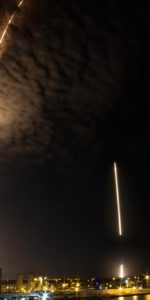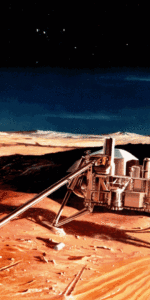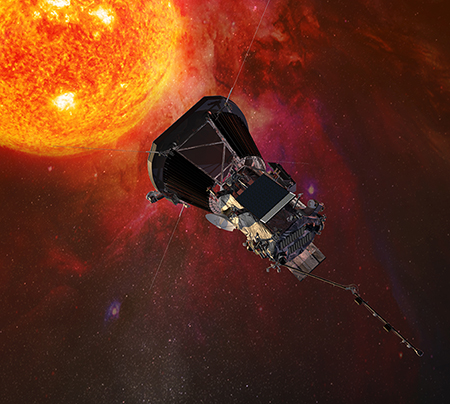
The Solar System is a busy place, with spacecraft currently visiting most of the planets as well as some dwarf planets and comets. Akatsuki is at Venus, several rovers and orbiters are at Mars, the Juno spacecraft just reached Jupiter, Cassini is still orbiting Saturn, Dawn is still at Ceres, and Rosetta continues to study the comet 67P. Mercury, Uranus, Neptune, and Pluto have all been visited by previous missions as well. But there is one other place in the Solar System which will also be explored more closely in the near future: the Sun.
The Sun may seem like an unlikely place to want to send a probe since you can only get so close before being fried to dust. NASA wants to do just that, however, with a new mission called Solar Probe Plus. The mission, which will be the first to “touch” the Sun’s outer atmosphere, is now on track for a planned launch in the summer of 2018, with a first close approach in 2024.
The mission has just passed a critical development milestone, with a successful NASA management review on July 7. It is now moving into the system assembly, integration, test, and launch stage, known as Phase D, which continues until launch.
“Reaching this stage means a lot to the team and our stakeholders,” said Andy Driesman, Solar Probe Plus project manager at the Johns Hopkins Applied Physics Laboratory (JHUAPL), which manages the mission for NASA and is building the spacecraft. “It shows we’ve designed a spacecraft, instruments and a mission that can address the engineering challenges associated with the harsh solar environment, and send back the data that scientists have sought for decades. It’s humbling to see designs and ideas start to become a spacecraft.”
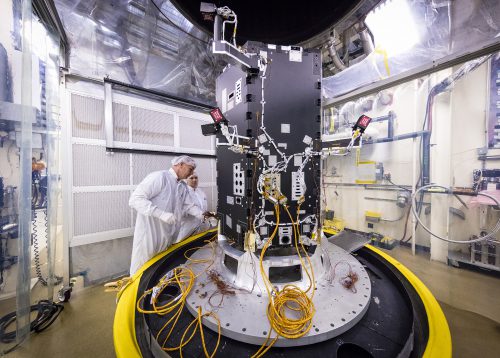
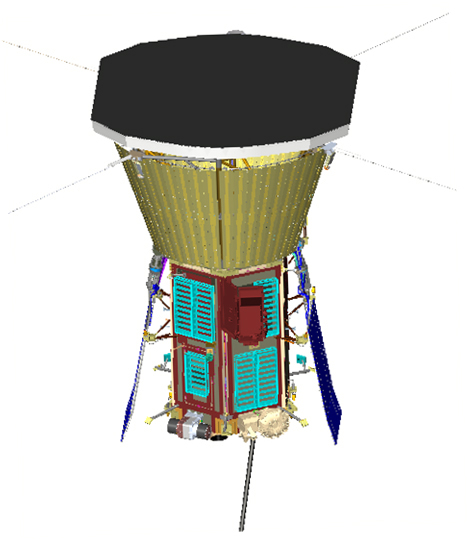
The spacecraft itself will be about 8 feet (2.4 meters) in diameter and weigh 1,350 pounds (612 kilograms).
SPP won’t get too close, but it will pass several times through the Sun’s outer atmosphere, the corona, during a period of 24 orbits, to collect data. With each pass, it will move a bit closer to the Sun. At its closest, during three orbits, it will pass within 3.9 million miles (6.3 million kilometers) of the Sun’s surface, which is about seven times closer than any previous spacecraft has been, including ones at Mercury. The solar energy at that distance will be immense, about 500 times more than spacecraft tend to have to deal with at Earth’s distance from the Sun. Mercury, by comparison, is 35.98 million miles (57.9 million kilometers) from the Sun. A 4.5-inch (11.4-centimeter) thick carbon-composite shield will protect the probe’s instruments from temperatures reaching nearly 2,500 degrees Fahrenheit (1,371 degrees Celsius). The previous record holder was the Helios 2 spacecraft, which passed about 27 million miles (44 million kilometers) from the Sun in April 1976.
The main objectives of the mission include obtaining new data on solar activity to help to better forecast space-weather events like solar flares which can directly impact Earth and orbiting satellites, trace the flow of energy from the Sun, better understand how the Sun’s outer atmosphere is heated, and explore the physical mechanisms which accelerate the solar wind. The solar wind is the continuous stream of charged and energetic particles flowing out from the Sun, which can affect spacecraft.
Four different instrument suites on SPP will study the Sun’s magnetic fields, plasma, energetic particles, and solar wind. Five different science investigations include:
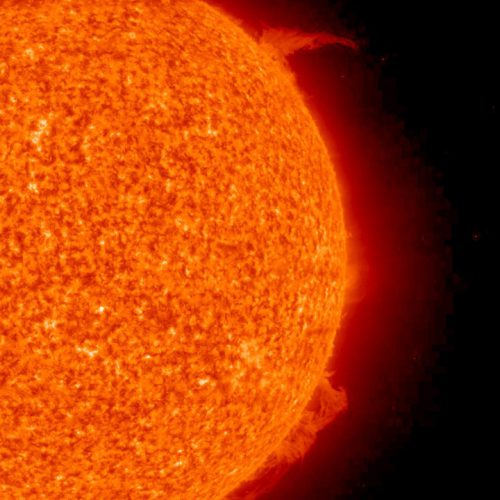
- Solar Wind Electrons Alphas and Protons Investigation, which will specifically count the most abundant particles in the solar wind—electrons, protons, and helium ions—and measure their properties. The investigation also is designed to catch some of the particles in a special cup (known as a Faraday cup) for direct analysis. Principal Investigator: Justin C. Kasper, Smithsonian Astrophysical Observatory, Cambridge, Mass.
- The Wide-field Imager, a telescope that will make 3-D images of the Sun’s corona, or atmosphere. The experiment actually will see the solar wind and provide 3-D images of clouds and shocks as they approach and pass the spacecraft. This investigation complements instruments on the spacecraft providing direct measurements by imaging the plasma the other instruments sample. Principal Investigator: Russell Howard, Naval Research Laboratory, Wash.
- The Fields Experiment, which will make direct measurements of electric and magnetic fields, radio emissions, and shock waves that course through the Sun’s atmospheric plasma. The experiment also serves as a giant dust detector, registering voltage signatures when specks of space dust hit the spacecraft’s antenna. Principal Investigator: Stuart Bale, University of California Space Sciences Laboratory, Berkeley, Calif.
- The Integrated Science Investigation of the Sun, which consists of two instruments that will take an inventory of elements in the Sun’s atmosphere using a mass spectrometer to weigh and sort ions in the vicinity of the spacecraft. Principal Investigator: David McComas, Southwest Research Institute, San Antonio.
- Heliospheric Origins with Solar Probe Plus Principal Investigator Marco Velli, of NASA’s Jet Propulsion Laboratory, Pasadena, Calif., is the mission’s observatory scientist, responsible for serving as a senior scientist on the science working group. He will provide an independent assessment of scientific performance and act as a community advocate for the mission.
A few “fun facts” about the mission include:
- Solar Probe Plus will orbit the Sun 24 times, gradually “walking in” toward the Sun with each pass. The closest points of each orbit come well within orbit of Mercury, the closest planet to the Sun.
- On the final three orbits, Solar Probe Plus will fly to within 8.5 solar radii of the Sun’s “surface” 8.5 solar radii is 8.5 times the radius of the Sun, or about 3.7 million miles. That is about seven times closer than the current record-holder for a close solar pass, the Helios spacecraft.
- At closest approach, Solar Probe Plus will be hurtling around the Sun at approximately 450,000 miles (739,000 kilometers) per hour! That’s fast enough to get from Philadelphia to Washington, D.C., in one second.
- Solar Probe Plus will pass Venus less than two months after launch and will be collecting science data at its first solar pass just one month later.
- At closest approach to the Sun, while the front of Solar Probe Plus’ solar shield faces temperatures approaching 2,500 degrees Fahrenheit (or about 1,400 degrees Celsius), the spacecraft’s payload will be near room temperature.
The mission was first approved back in April 2015, after completing a Critical Design Review (CDR).
“The completion of CDR is a testament to the focused, diligent work of APL, NASA, the instrument teams and our industry partners,” said Driesman. “We’re excited to continue working on a difficult mission that’s been more than 50 years in the making, one that is now achievable thanks to advances in technology, materials and design.”
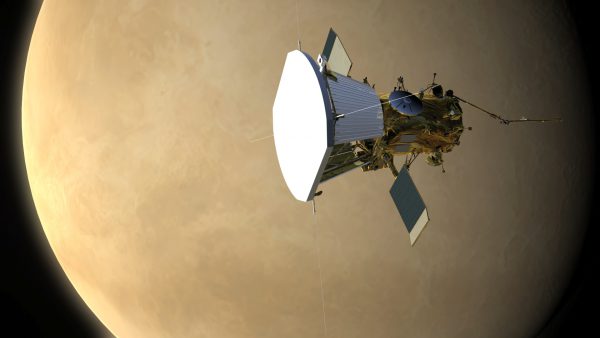
Solar Probe Plus is scheduled to launch aboard a United Launch Alliance Delta 4-Heavy rocket with an upper stage from Cape Canaveral Air Force Station in Florida, with a launch window opening for 20 days starting on July 31, 2018. The mission timeline, in brief:
- Launch – July 31, 2018
- Venus flyby #1 – Sept. 27, 2018
- Venus flyby #2 – Dec. 21, 2019
- Venus flyby #3 – July 5, 2020
- Venus flyby #4 – Feb. 15, 2021
- Venus flyby #5 – Oct. 10, 2021
- Venus flyby #6 – Aug. 15, 2023
- Venus flyby #7 – Oct. 31, 2024
- First close approach – Dec. 19, 2024
Solar Probe Plus has actually been in a concept stage for the past 50 years, with various previous designs; the current design is based on a proposal from 2005, in a study performed at the Johns Hopkins University Applied Physics Laboratory (JHUAPL). The original design would have used nuclear power (an RTG engine), but that was replaced with the newer design, without the RTG and for less cost. The new design is actually capable of providing more science than before as well. Solar Probe Plus is the keystone of the Living With a Star (LWS) program.
Understanding how the Sun behaves is of course important since it can directly affect life on Earth. Our Sun is a relatively stable star, but changes in solar energy output, such as during massive solar flares, can still have an impact. The data gathered should also help scientists better understand other stars as well, especially ones which are similar to our Sun, and how this may affect the potential habitability of some exoplanets.
More information about the Solar Probe Plus mission is available at its NASA website.
Want to keep up-to-date with all things space? Be sure to “Like” AmericaSpace on Facebook and follow us on Twitter: @AmericaSpace




